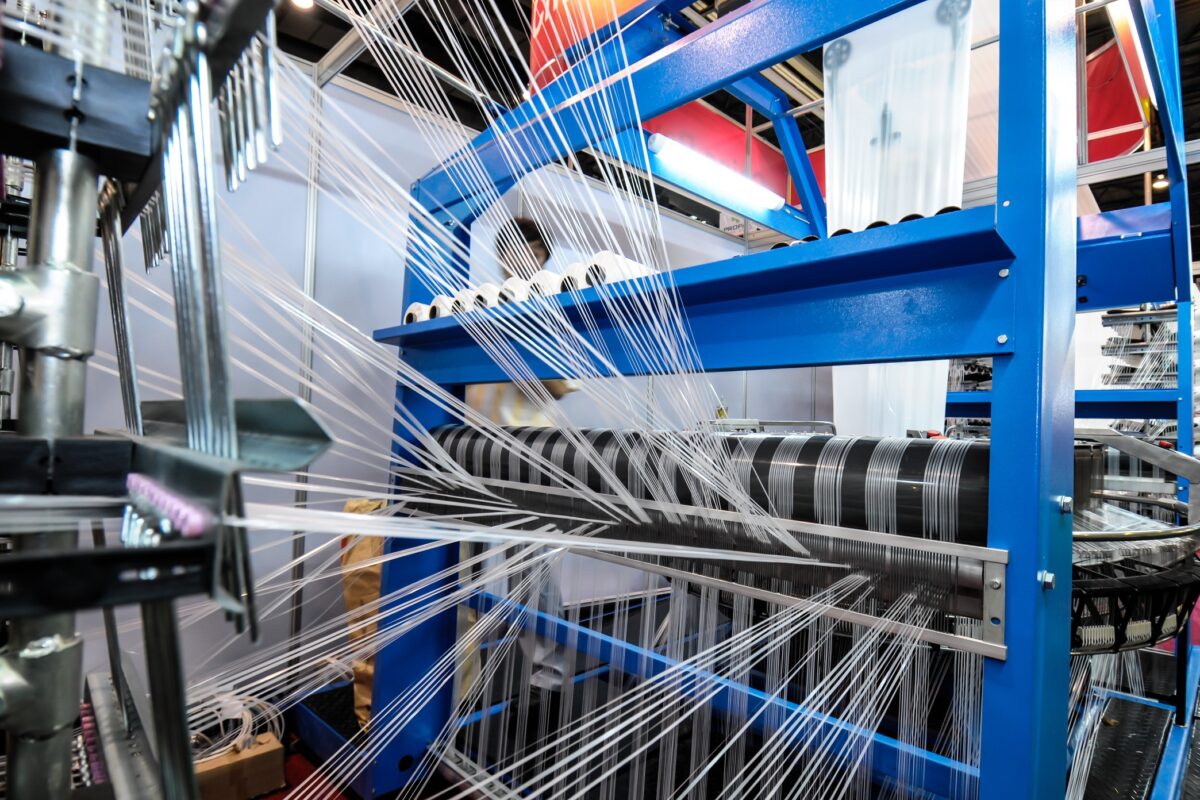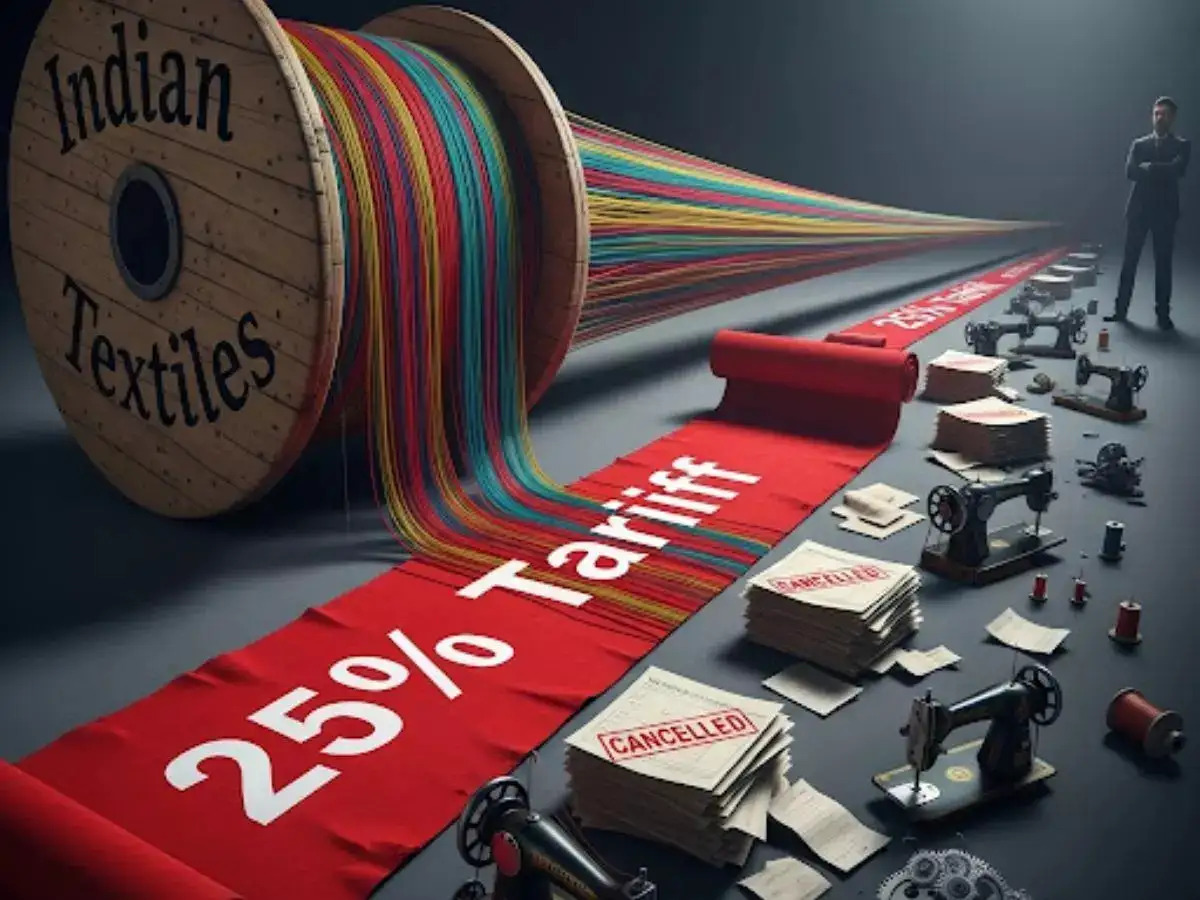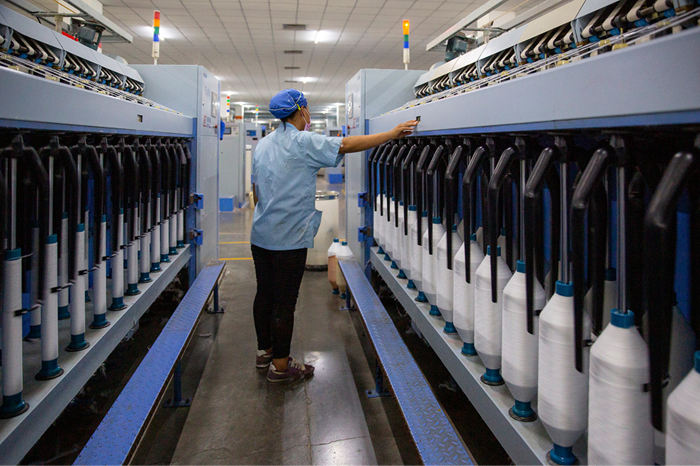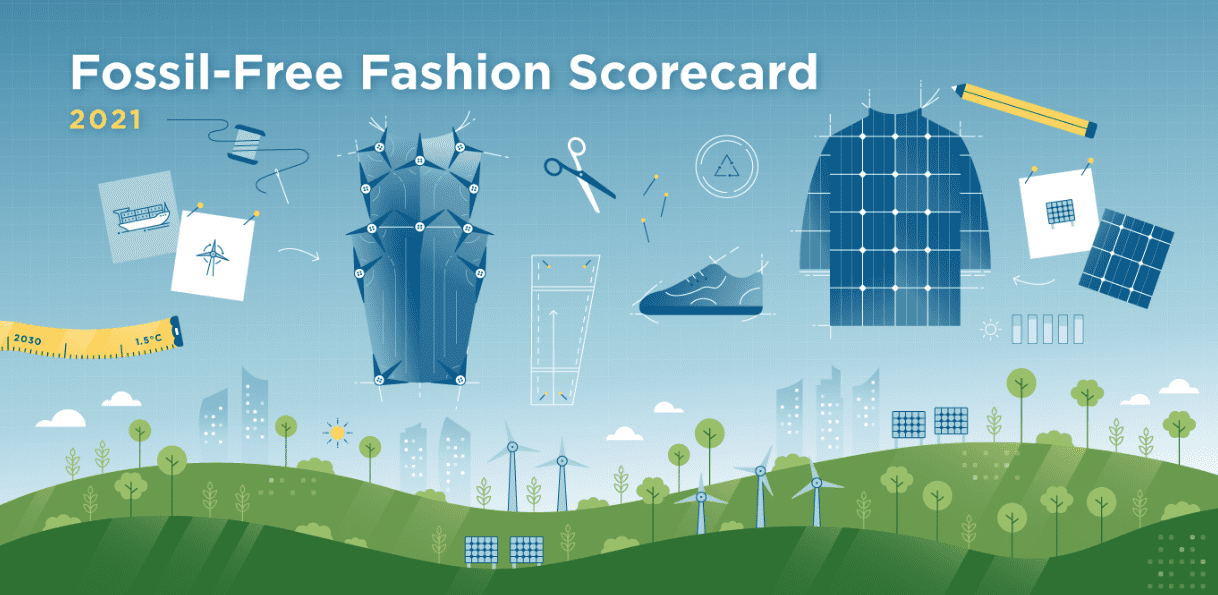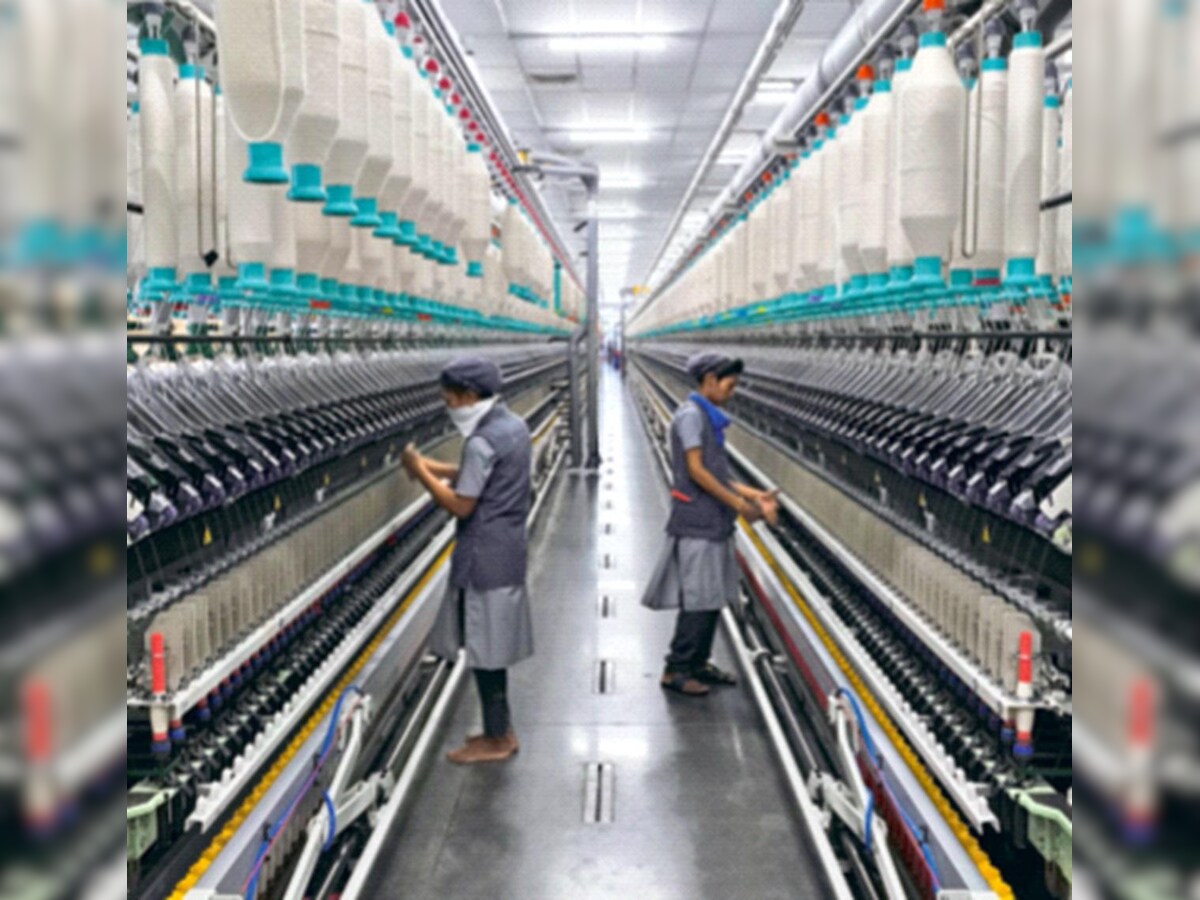FW
Textiles manufacturer and exporter Welspun’s net sales grew 19 per cent in the September quarter. It posted a net loss of Rs 147.52 crores. Welspun’s total income from operations jumped 22 per cent in July to September 2016 from the same quarter last year. The company achieved its highest quarterly top line during the quarter.
The company has taken a one-time hit of Rs 501 crores with regard to the traceability issue in Egyptian cotton. Despite a 18.2 per cent revenue growth in the first half of 2016-17, Welspun forecast flat revenue for the full financial year. It plans to become a zero debt company by 2020 by shedding its Rs 2,500 crores debt.
Welspun plans to expand its focus on branded and innovative products to become a two billion dollar company in four years, with 20 per cent revenue coming in from domestic sales. It will set up a Rs 600 crores carpet plant near Anjar in 18 months. The investment will be met through internal accruals and debt. The company also plans to spend Rs 600 crores over 18 months spread over financial year 2018 and 2019 to make carpets and rugs. The company’s credit ratings have also been reaffirmed.
Ahmedabad-based Nandan Denim’s net profit rose 4.42 per cent for the second quarter of 2016-17. The company is poised to be Asia’s largest denim fabric manufacturer. Net sales for the second quarter were higher by 2.75 per cent. EBITDA and PAT margins were 16.23 per cent and 5.38 per cent. EPS stood at Rs 3.39 at a face value of Rs 10 per share.
For the six months ended September 2016, the company’s net profit rose 3.73 per cent. Net sales in the first half of 2016-17 were higher by 4.88 per cent compared to the first half of the previous fiscal. For the first half of 2016-17, EBITDA margin stood at 16.21 per cent and PAT margin at 5.35 per cent.
Nandan, opened in 2004 has a capacity for 120 million meters a year. It makes products from three ounce to 15 ounce. It has backward integration of spinning and fancy attachments. It has economies of scope and scale. It gets value addition from fabrics. Its response time is fast.
Nandan wants to shift from being a denim manufacturer to a fashion driven brand. It wants growth with value. The group turnover last year was two and a half thousand crores and Nandan’s share was Rs 1200 crores.
Orders for Italian textile machinery recorded an increase of 16 per cent for the third quarter of 2016. The third quarter value for 2016 stood at 101.1 points. However, this growth applied to exports only, where the index recorded an absolute value of 112.3 points, a 20 per cent increase compared to July to September 2015. In Italy, the index stood at 48 points, dropping by 14 per cent over the same quarter in 2015.
The situation in Italy’s domestic market appears to be less positive. The order intake has declined after two consecutive quarters of growth. Italian textile machinery manufacturers comprise around 300 manufacturers, employing close to 12,000 people and producing machinery for an overall value of about euro 2.6 billion, with exports amounting to 86 per cent of total sales.
It is confident that the plan put forward by the Italian government for 2017 fiscal year can give confidence to businesses which need to invest. Italy is the world’s second largest producer of machinery for the textiles industry. In the production of machinery for tanning, and for the footwear and leather goods industry, Italy accounts for over 50 per cent of world production.
Italian manufacturers have for a while now focused on the sustainability of their products to meet a demand for technological solutions that effectively lower consumption and, as a consequence, production costs.
Indo Rama Synthetics’, India’s largest dedicated polyester manufacturer saw its sales volume rise 16.13 per cent for the quarter ended on September 30, 2016. But it reported a net loss of Rs 14.69 crores for the quarter that ended on September 30, 2016, compared to a net loss of Rs 49.71 crores in the corresponding quarter of last year.
Operational EBIDTA for the quarter was Rs 3.47 crores, compared to Rs 0.60 crores in the corresponding quarter of last year. The company reported operational revenue of Rs 766.16 crores during the quarter, compared to Rs 695.03 crores for the same period of the previous year.
The main business activities are textiles, polyesters, and industrial chemicals. However in the last few years there has been an oversupply of polyester in the industry. This has resulted in lower profit margins for the company. Indo Rama has taken several initiatives to improve its operational performance in terms of specialty products, higher capacity utilisation, cost control initiatives and addition of new customers. The production capacity is 6,10,050 tons per annum of polyester staple fiber, filament yarn, draw texturized yarn, fully drawn yarn and textile grade chips. Besides India Indo Rama has a strong presence in Indonesia, Thailand, USA, Nepal and Sri Lanka.
"In the highly competitive landscape transforming an unsustainable global supply chain is extremely challenging. But this can be achieved if competitors become colleagues and mentors to garner progress in the long run. It’s the power of collective action that can transform the entire textile and apparel landscape. The same phenomenon was witnessed recently in New York City as environmental nonprofit Canopy, along with H&M, Zara, Stella McCartney, Marks & Spencer and Eileen Fisher, came together along with 87 global fashion brands and retailers to strategies conservation solutions for the world’s endangered forests."
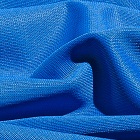
In the highly competitive landscape transforming an unsustainable global supply chain is extremely challenging. But this can be achieved if competitors become colleagues and mentors to garner progress in the long run. It’s the power of collective action that can transform the entire textile and apparel landscape. The same phenomenon was witnessed recently in New York City as environmental nonprofit Canopy, along with H&M, Zara, Stella McCartney, Marks & Spencer and Eileen Fisher, came together along with 87 global fashion brands and retailers to strategies conservation solutions for the world’s endangered forests.
Connecting the dots

The immensely popular fabric rayon (otherwise known as viscose, modal or lyocell) has become a major driver of logging globally, with more than 120 million trees disappearing into the fabric annually. According to Giles Bolton, Responsible Sourcing Director, Tesco, going by consumers’ demand for eco-friendly clothing in the most affordable range, we need to save on forests and preserve natural wealth. For this to happen, companies must come forward to create a shift in the global fiber supply and ensure it becomes free of ancient forests. With a shared 2017 deadline to end the use of endangered forests in fabrics fast approaching, the campaign has gained strong momentum.
Here are five key reflections from the summit on companies’ collective efforts:
Success linked to being together
The power of collaboration is shifting the rayon supply chain at almost record pace. Three years since its launch, CanopyStyle has 68 apparel brands and designers committed towards eliminating use of fabrics containing endangered forests. This phenomenon has forced producers, representing 70 per cent of global rayon production, to work with Canopy, and kick-start innovative solutions as well as build lasting conservation solutions for forests. As an NGO, Canopy is conscious of the business adage ‘the customer is always right’.
Setting a stronger foundation
Every movement starts with a spark. And in this movement, the CanopyStyle Leaders’ Working Group has set the fire of this industry-wide shift ablaze. H&M, Stella McCartney, EILEEN FISHER, Marks & Spencer and Inditex/Zara already work closely with Canopy on strategic planning, implementing ideas, influencing forest conservation on the ground and setting the pace for the sector. With the support of this cadre of brands, Canopy has been able to catch the attention of viscose producers and motivate them to embark upon a path of similarly ambitious environmental commitments.
Creating awareness of the unknown

Connecting the complex rayon supply chain to a specific place and community, enables brand representatives to analyses as to how big the price tag associated with sourcing can be and how well positioned they are to help advance change on the ground. In this regard, Boreal is one of the most important, intact forests remaining on the planet, which plays a vital role in mitigating climate change, provides copious fresh water and acts as the nursery for billions of birds every year. The Boreal is also a landscape where there is going to be a significant increase in logging for rayon production over the coming decade.
Projecting the data
Canopy has developed systems and tools to support brand representatives. One such tool was The Hot Button Issue (PDF), a report ranking the world’s largest viscose producers. This detailed report helps brands to make the most informed decision about where to source rayon as well as track rayon producers’ progress. Feedback from the Summit will also help Canopy in developing the next generation of tools and it became clear that public profile and communications about the issue and initiative will become a priority in 2017 and beyond.
Building markets for GenX fabrics
Building markets for next gen fabrics that support global economy and advancing conservation legacies in priority forest landscapes are key elements of Canopy’s work with the fashion sector. While brands focus on reversing the adverse impacts of their viscose supply chain, they also contribute to conservation legacies in Landscapes of Hope such as the Great Bear Rainforest and systemic solutions that will see textiles produced from waste fabrics.
Additionally, fun and quirky awareness campaigns such as Stella McCartney’s deforestation videos engage people on serious issues. Envisioning the ‘Art of the Possible’ and having fun with it is key to ensure that the movement continues to build and that ultimately, ultimately being stylish doesn’t have to harm the earth.
Denim Première Vision is changing its location, positioning, dates and managing team. The show recently announced its May 23-24, 2018 edition will take place in Paris’ Parc Floral and the following edition will take place at a new location: In London, at Old Truman Brewery, near Shoreditch in the very heart of East London, in the fashion, art and culture district. The winter edition will also have new dates from December 5-6, 2018.
From now on, Denim Première Vision will be organised alternately in Paris and in a European city with a strong fashion influence. The idea is to encourage closeness with fashion and design markets while presenting the sector with new sources of inspiration. The show will also reorganise its areas and present collections and products in a new, more efficient and contemporary scene to inspire visitors. Fashion tools have been redesigned and will be more instructive. Denim trends area and seminars will offer inspirations, analysis and guidance on the season's trends.
The show’s team is being spruced up: Guglielmo Olearo, international exhibitions director for Première Vision, is also taking over the management of Denim Première Vision. He is replacing Chantal Malingrey, a member of the board who, along with her role as marketing and development director for Première Vision and director of special events will now become the director of the pre-collections show, Blossom Première Vision.
Fabio Adami Dalla Val the show manager says, “The denim market is evolving fast and this show is evolving with it. For this reason we decided it is time it takes place in different cities that could be inspiring for insiders, according to always new trends influencing the denim and fashion markets. We also chose to move the show’s dates forward as is the case of end of May and beginning of December. By those dates on the one side, the supply chain can be ready and present their new full collections, and, on the other side, brands and retailers can place orders and make final adjustments to their collections’ pre- production, according to real market feedback,” he added.
With a planned bankruptcy auction a little over a month away, Los Angeles-based American Apparel is still looking for a buyer that will keep its store doors open. There is hope for its manufacturing and distribution operations but a big question mark remains over the fate of the retailer’s 110 stores. It is hoping, buyers step up to salvage the rest of its business. However, the only deal the cash-strapped company has in hand is from Canada’s Gildan, which is offering about $66 million for the intellectual property, some wholesale inventory and an option on manufacturing and distribution assets.
A plan to improve online selling didn't pay off, and, at a time when shoppers are going online in greater and greater numbers, American Apparel watched its online sales fall. American Apparel began as a wholesale T-shirt business in 1998. But the hoped-for turnaround of the clothing manufacturer and retail chain—which has long grappled with shrinking sales and an outsize store footprint—did not happen.
In the days leading up to the US bankruptcy filing, American Apparel began winding up its affairs in the UK, Ireland, Germany, Spain, Canada, Japan and Australia, part of a foreign sprawl that included 83 stores.
Bangladesh may be the world’s second largest exporter of apparel but it’s per hour earnings from the export of apparel are the lowest in south Asia. The country’s per hour earnings from apparel exports are $0.51 while the amount is $0.55 dollars for Sri Lanka, $0.58 for Pakistan and $1.06 for India. For China it is $2.6.
Bangladesh’s per capita export earnings from apparel which are $126 are also well below China’s at $365 and Vietnam’s at $312. The regional average for South Asia is $70. Though the South Asian region possesses several key advantages in the apparel sector, its share of the global apparel market continues to lag behind China’s, which accounts for 41 per cent of the global market. Still South Asia’s share of the global apparel market increased to 12.3 per cent in 2012 from 7.5 per cent in 2000.
Despite higher labor costs, China is able to attract buyers by offering a wide range of apparel at short lead times, while high productivity limits total costs despite high wages. No country in South Asia has thus far succeeded in offering a comparable package of goods and services.
Yarn Fabric & Accessories Show (YFA) 2016 will be held in New Delhi, November 23 to 26, 2016. It aims to redefine the way fiber, yarn, fabric and apparel accessories are sourced and bring renowned suppliers from these four segments closer to buyers and also offer buyers a one-stop place to source all their requirements. The aim is to bring producers of world class and multiple varieties of value added fibers, yarns, fabrics and garment accessories closer to end-users.
The show is a gateway to foreign companies to enter the India. It is taking place in a region of India, which is one of the biggest Indian hubs for manufacturing textiles and apparel. It attracts companies in the textile value chain from all over India. New Delhi and its surrounding area house several Indian and global apparel brands and hundreds of spinning and weaving units as well as thousands of garment manufacturing units.
Top officials, merchandising and sourcing teams from these companies and brands are expected to attend the show, which will provide exhibitors access to the most exclusive buyers ever seen in any other exhibition of this category.
FIEO, India’s apex trade promotion body set up by the Ministry of Commerce and Industry in India promotes India's international trade. FIEO represents small, medium and large scale exporting units spread on a pan-India basis. Today it boasts of a direct membership of over 22,000 companies. They represent every product and service sector of India.
It has been FIEO's endeavor to promote trade with important international markets in line with the objectives of the Indian commerce ministry and the country as a whole. FIEO has offices all across India.
FIEO is participating at International Sourcing Expo Australia. It is by far the biggest spectacle showing Indian products in Australia. More than 65 Indian companies are participating and showing manufactured goods like apparels, textiles, sports goods, home furnishings, industrial textiles, leather products etc.
In his speech at ISEA, S C Ralhan-President, FIEO said the objective of the Indian participation is to project the image of India as a fast emerging economy in Asia and its attractiveness as a destination for high end manufactured goods. “Australia is India’s largest trading partner in East Asia with a bilateral trade of about 12 billion dollars in 2015-16.India's exports to Australia in 2015-16 registered a growth of 17.29 per cent with the trade balance in favor of Australia. However, the trade is nowhere its potential and there is immense scope for expansion,” he said.
“India and Australia have much to share with one another and we have seen our relationship expanding in many ways over the years, including through increased people to people links. Australia has also placed India at the forefront of its international partnerships. Both the governments recognise that there is a significant potential for further expansion iof co-operation in wide range of areas. The two countries are actively engaged in Regional Comprehensive Economic partnership (RCEP) negotiations to work out most beneficial tariff arrangement between the two countries besides other partners,” he poi nted out.




